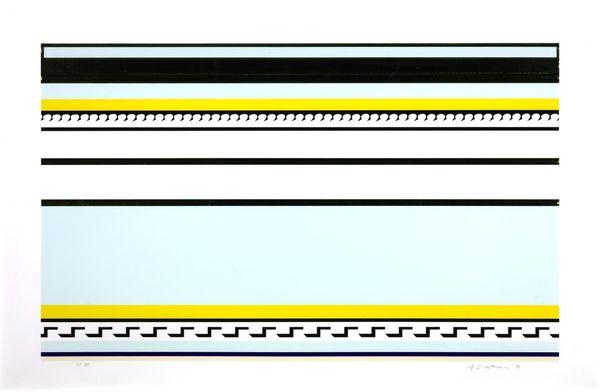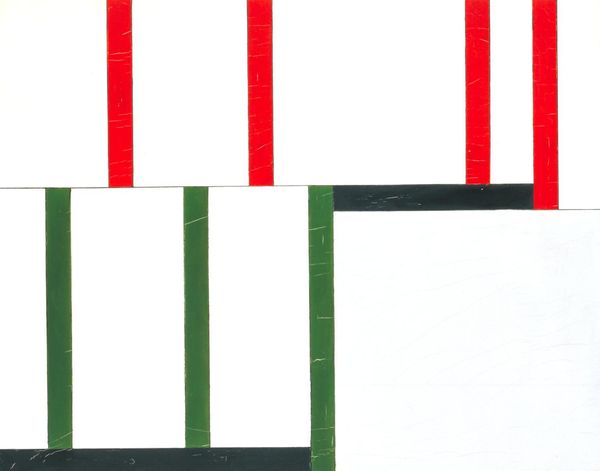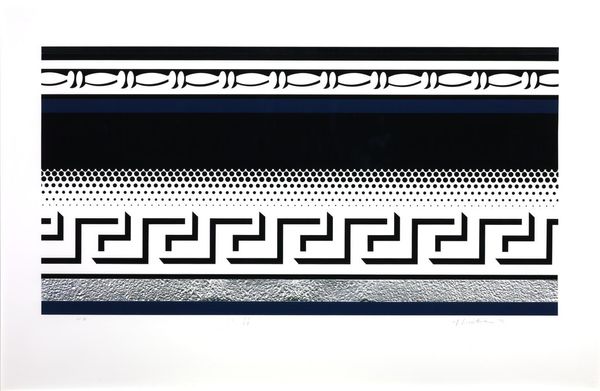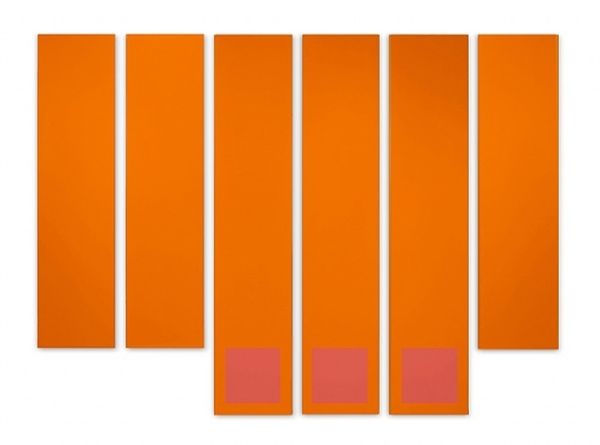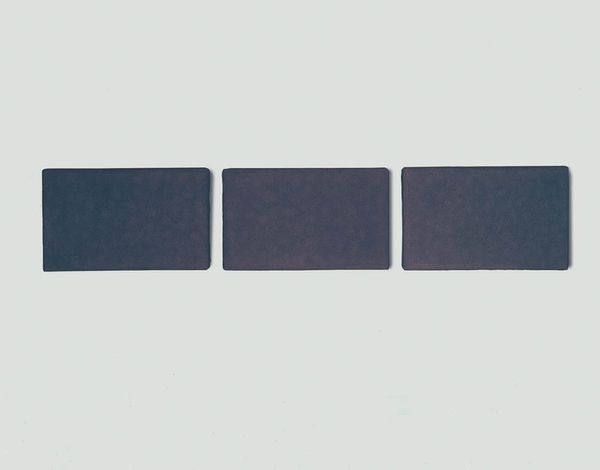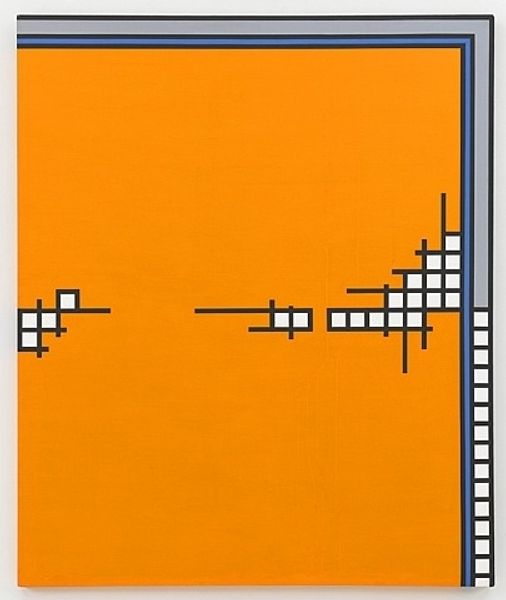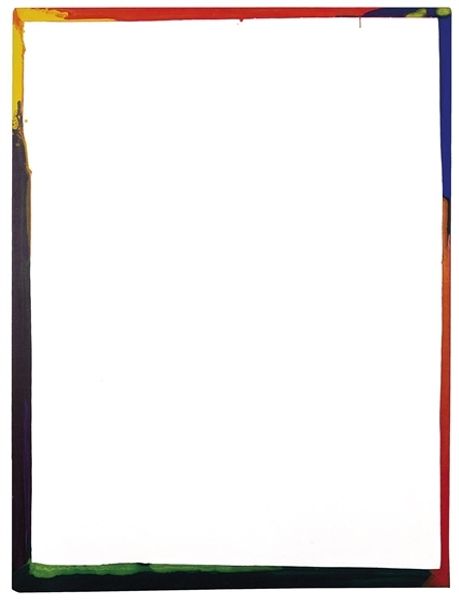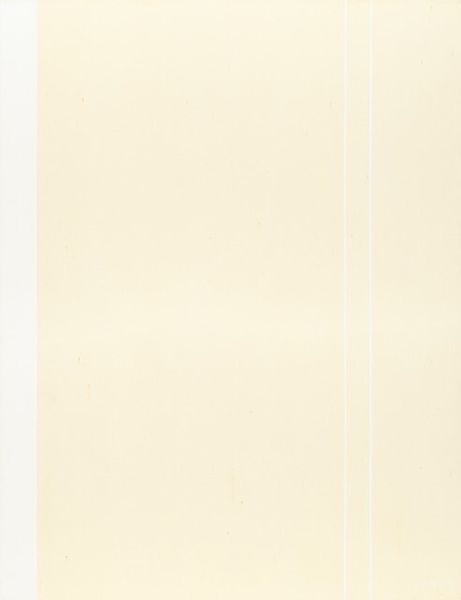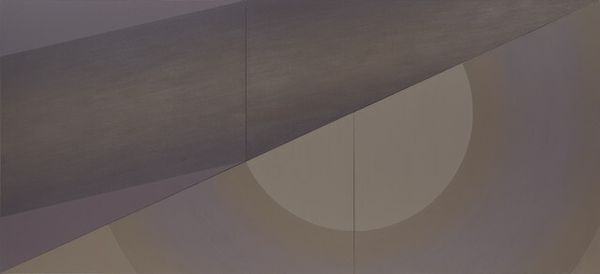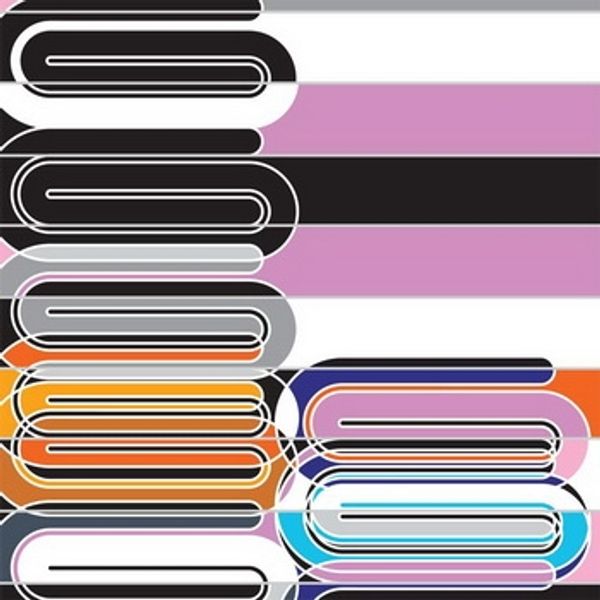
Dimensions: image: 554 x 960 mm
Copyright: © Estate of Roy Lichtenstein/DACS 2014 | CC-BY-NC-ND 4.0 DEED, Photo: Tate
Editor: Here we have Roy Lichtenstein's "Entablature VIII" from the Entablature Series. It's so striking how Lichtenstein distills classical architecture into these bands of simplified motifs. What historical echoes do you hear in this work? Curator: Lichtenstein isolates and flattens these architectural details, inviting us to reconsider their symbolic weight. The frieze, for example, traditionally narrates stories. What narratives might these fragmented symbols evoke for us now? Editor: I guess it depends on the viewer, right? It feels almost like a deconstructed language. Curator: Precisely! The language of classical architecture, once so clear, is now abstracted, open to new interpretations. This invites us to question how cultural meanings shift and transform over time. Editor: That's fascinating. I see it both as a celebration and a critique. Curator: Indeed, a duality that keeps the past in conversation with the present. A powerful way to ensure cultural memory continues to evolve.
Comments
tate 6 months ago
⋮
http://www.tate.org.uk/art/artworks/lichtenstein-entablature-viii-p78378
Join the conversation
Join millions of artists and users on Artera today and experience the ultimate creative platform.
tate 6 months ago
⋮
Roy Lichtenstein started working on the subject of entablatures (ornamental features found on classical and classicising building façades between the columns and roof, which traditionally consist of an architrave, frieze and cornice) in 1971, producing two series of Entablature paintings in 1971-2 and 1974-6. The second series coincided with the study and production of his Entablature prints, which were completed in April 1976. The print series consists of eleven prints on off-white Rives wove paper, of which Tate owns six, Entablature IV to Entablature IX. Edition numbers vary between the individual prints, as does the number of proofs; Entablature IV is an edition of thirty plus nine artist's proofs, one right-to-print, one printer's proof and an archive copy. The series was printed and published in New York by Tyler Graphics Ltd., whose blind stamp appears in the bottom right-hand corner of each print; Tate's prints were bought from the Collection of Tyler Graphics through Sotheby's. This text discusses the group of six prints (P78374-78379) as a whole. As a source for his Entablature paintings and prints Lichtenstein took a number of photographs of entablatures on twentieth-century New York building façades in Lower Manhattan and, specifically, in the vicinity of Wall Street and 28th Street. The photographs were generally taken around midday, when the play between light and shade is at its sharpest (Cowart 1981, p.31; three of Lichtenstein's entablature photographs are reproduced on the same page). By the time he started working on the second painting series and the prints, however, the artist's dependence on the photographs had lessened and he experimented more freely with more abstract and looser forms. A decade earlier Lichtenstein had employed a number of unusual materials in his prints such as 'Rowlux', a multi-lensed effect plastic (see, for example, Moonscape, 1965, P01795), 'Mylar', a polyester packaging film, and silver foil. In the Entablature series he continued to innovate, using a number of new and highly complex techniques, including screenprinting, hand-cut stencils, photo-stencils, lithographs and collaged and embossed machine-cut foil elements in different colours and finishes (matte pink, gloss and matte silver, gloss gold and gloss black foil were all used). The prints combined screenprinted and lithographed areas with variously coloured metal foils embossed and debossed with architectural motifs. The process resulted in richly textured prints which play with the illusion of real architectural ornamentation and flat abstract pattern, graphic representations of and actual raised reliefs. The architectural elements in the Entablature series can be seen as providing the artist with ready-made designs, in much the same way as comic strips and advertisements had provided him with easily recognised motifs in his earlier work. Lichtenstein's reductive presentation of the repetitive geometry of entablatures has further been understood as a comment on the concern of minimal and conceptual art with anonymous seriality. The horizontal flow of the ornamentation suggesting an uninterrupted continuation of the pattern beyond the printed sheet parodies, as the writer Barbara Rose has pointed out, 'the conventional divisions of landscape by ground and horizon lines' (Roy Lichtenstein: Entablature Series, New York 1976, unpaginated). In the Entablature prints, Lichtenstein continued and expanded his exploration of issues of mechanical reproduction, representation and abstraction, which are also prominent themes in the series of Haystacks, 1969 (P07407-P07413), and Bull Profiles, 1973 (P11482-P11487) in the Tate Collection. Taking architectural ornamentation as a starting point, Lichtenstein addressed the uncomfortable relationship in the twentieth century between abstraction and repetitive geometric pattern. Further reading:Roy Lichtenstein: Entablature Series, New York 1976, unpaginated, reproduced [p.8] in colourJack Cowart, Roy Lichtenstein 1970-1980, exhibition catalogue, Saint Louis Museum of Art 1981Mary Lee Corlett, The Prints of Roy Lichtenstein: A Catalogue Raisonné 1948-1993, New York 1994, reproduced p.144 in colour Christoph GrunenbergJuly 2000Revised by Giorgia BottinelliApril 2002
